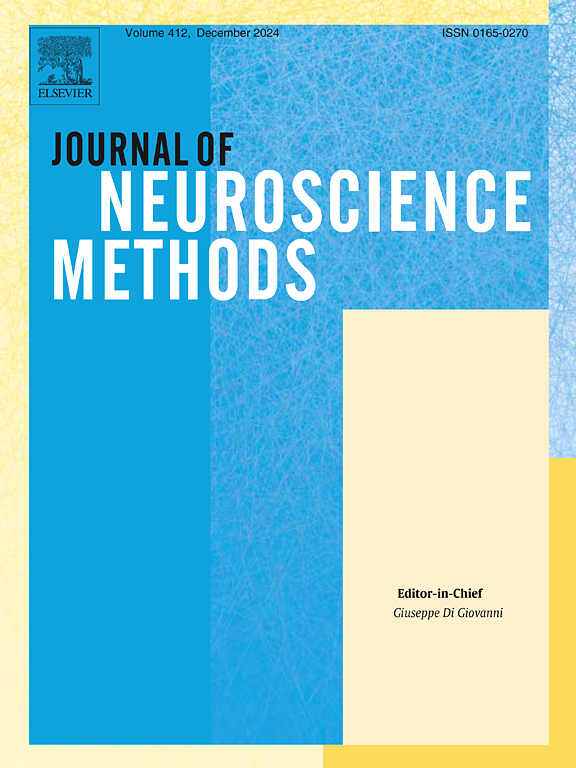Multimodal predictive modeling: Scalable imaging informed approaches to predict future brain health
IF 2.7
4区 医学
Q2 BIOCHEMICAL RESEARCH METHODS
引用次数: 0
Abstract
Background:
Predicting future brain health is a complex endeavor that often requires integrating diverse data sources. The neural patterns and interactions identified through neuroimaging serve as the fundamental basis and early indicators that precede the manifestation of observable behaviors or psychological states.
New Method:
In this work, we introduce a multimodal predictive modeling approach that leverages an imaging-informed methodology to gain insights into future behavioral outcomes. We employed three methodologies for evaluation: an assessment-only approach using support vector regression (SVR), a neuroimaging-only approach using random forest (RF), and an image-assisted method integrating the static functional network connectivity (sFNC) matrix from resting-state functional magnetic resonance imaging (rs-fMRI) alongside assessments. The image-assisted approach utilized a partially conditional variational autoencoder (PCVAE) to predict brain health constructs in future visits from the behavioral data alone.
Results:
Our performance evaluation indicates that the image-assisted method excels in handling conditional information to predict brain health constructs in subsequent visits and their longitudinal changes. These results suggest that during the training stage, the PCVAE model effectively captures relevant information from neuroimaging data, thereby potentially improving accuracy in making future predictions using only assessment data.
Comparison with Existing Methods:
The proposed image-assisted method outperforms traditional assessment-only and neuroimaging-only approaches by effectively integrating neuroimaging data with assessment factors.
Conclusion:
This study underscores the potential of neuroimaging-informed predictive modeling to advance our comprehension of the complex relationships between cognitive performance and neural connectivity.
多模态预测建模:预测未来大脑健康的可扩展成像知情方法
背景:预测未来大脑健康是一项复杂的工作,通常需要整合不同的数据来源。通过神经影像学识别的神经模式和相互作用是可观察到的行为或心理状态表现之前的基本基础和早期指标。新方法:在这项工作中,我们引入了一种多模态预测建模方法,该方法利用成像信息方法来深入了解未来的行为结果。我们采用了三种方法进行评估:仅使用支持向量回归(SVR)的评估方法,仅使用随机森林(RF)的神经成像方法,以及将静息状态功能磁共振成像(rs-fMRI)的静态功能网络连接(sFNC)矩阵与评估相结合的图像辅助方法。图像辅助方法利用部分条件变分自编码器(PCVAE)仅从行为数据预测未来就诊时的大脑健康结构。结果:我们的性能评估表明,图像辅助方法在处理条件信息以预测后续就诊的大脑健康结构及其纵向变化方面表现出色。这些结果表明,在训练阶段,PCVAE模型有效地从神经成像数据中捕获相关信息,从而有可能提高仅使用评估数据进行未来预测的准确性。与现有方法的比较:本文提出的图像辅助方法通过有效地将神经影像学数据与评估因素相结合,优于传统的仅评估和仅神经影像学方法。结论:这项研究强调了神经成像预测模型的潜力,以促进我们对认知表现和神经连通性之间复杂关系的理解。
本文章由计算机程序翻译,如有差异,请以英文原文为准。
求助全文
约1分钟内获得全文
求助全文
来源期刊

Journal of Neuroscience Methods
医学-神经科学
CiteScore
7.10
自引率
3.30%
发文量
226
审稿时长
52 days
期刊介绍:
The Journal of Neuroscience Methods publishes papers that describe new methods that are specifically for neuroscience research conducted in invertebrates, vertebrates or in man. Major methodological improvements or important refinements of established neuroscience methods are also considered for publication. The Journal''s Scope includes all aspects of contemporary neuroscience research, including anatomical, behavioural, biochemical, cellular, computational, molecular, invasive and non-invasive imaging, optogenetic, and physiological research investigations.
 求助内容:
求助内容: 应助结果提醒方式:
应助结果提醒方式:


